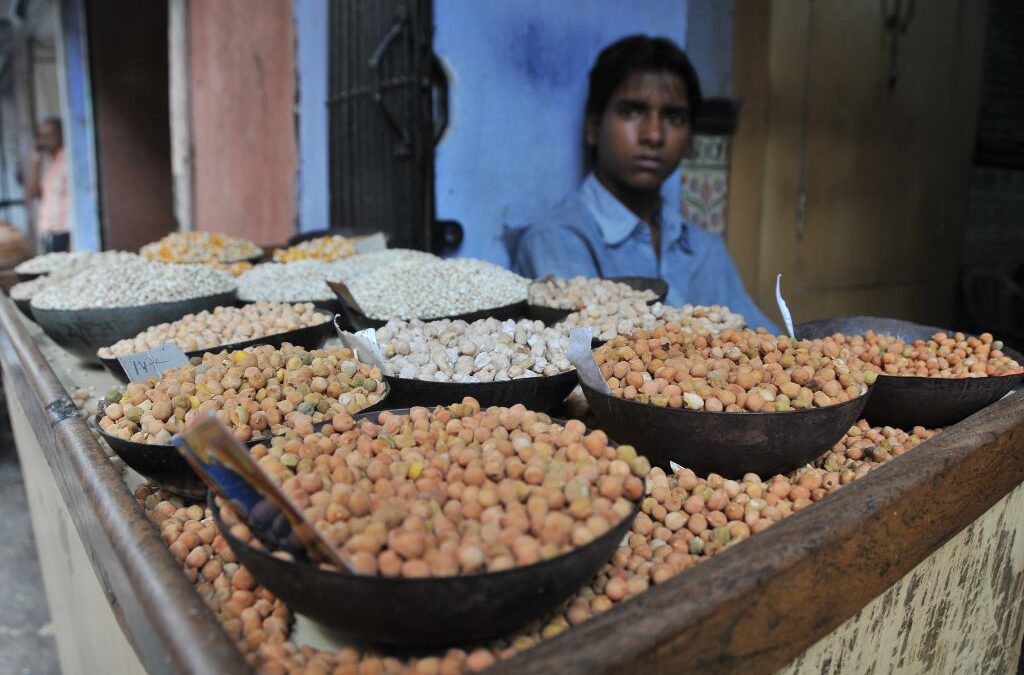Heavy rain and hailstorm in mid-March and early April might affect yield of pulse crops; official says government focusing on nutrition and security
By Raju Sajwan
The central government has begun taking steps to monitor stock levels of pulses in the country. Many suspect that heavy rain and hailstorm in the second fortnight of March and early April might affect the yield of pulse crops.
Central consumer affairs secretary Rohit Kumar Singh took a meeting of pulses traders in Indore April 15, 2023.
“Officials of the Union Ministry of Consumer Affairs, Food & Public Distribution visited 12 places in different parts of the country to talk to market players. They urged traders to upload pulses stock information on the ministry’s portal every Friday and warned of strict action if the instructions were not followed,” Rohit Singh told reporters.
The third advance estimates for the production of major crops 2022-23 by the Union Ministry of Agriculture and Farmers Welfare will be released in the middle of May.
The second advance estimates were released on February 14, 2023. The total production of pulses in the 2022-23 marketing season was estimated to increase over the last year.
“Bengal gram crops were damaged in parts of the country due to the rains on March 15 and the first week of April,” AK Tiwari, former director of the Directorate of Pulses Development, Department of Agriculture and Farmers Welfare, told Down To Earth.
There have been reports of damage, especially from Rajasthan and Madhya Pradesh, but this loss is only three-five per cent. It should not reduce the overall production of the pulse, he added.
Tiwari said 52 per cent of pulses are produced in the country in the Rabi season and 48 per cent in the Kharif season. “The two major pulse crops of Rabi season are Bengal gram and pink lentils. Bengal gram accounts for 66 per cent of the total production in the Rabi season,” he added.
Usually, 11 million hectares of black gram is planted in the country in the Rabi season. However, seven per cent more land was sown with black gram in the current rabi season (2022-23), so the yield is expected to increase by 18 per cent.
Pink lentils are sown in 1.4 million ha usually, but the sowing area has increased by 21 per cent in the current Rabi season (2022-23), which can lead to a 19 per cent increase in production, he further said. “In this scenario, even if the yield is affected due to rain, the effect will be low,” Tiwari said.
The area under pulses is only six per cent less than the last kharif season (2022-23) and so, a decrease of only three per cent in production is estimated, he said. However, the sown area in this Rabi season is 11 per cent more than last year — 17 million ha.
On being asked why the government was taking stock of pulses if the yield was not expected to dip, Tiwari said the government is being extra vigilant as it focuses on nutrition and food security.
Low production of pulses
The total production of pulses in 2021-22 was 27.3 million tonnes, while production was projected at 27.81 million tonnes in the second estimates. The target for the current year was kept at 29.55 million tonnes.
The government might be concerned about a decrease in the production of arhar, also known as tur or pigeon pea, according to an expert, even though the estimates had projected an increase in the production of all pulses.
In the last Kharif season, the target of pigeon pea production in the country was 4.55 million tonnes. However, the production was only 3.66 million tonnes, even though it was 4.22 million tonnes the preceding year.
A decline in the sown area might be the reason for the low production of pigeon pea. The crop was planted in 4.2 million ha in the country in 2022, while in the previous year, it was sown in 4.75 million ha.
A decline in the sown area might be the reason for the low production of pigeon pea. The crop was planted in 4.2 million ha in the country in 2022, while in the previous year, it was sown in 4.75 million ha.
“Farmers plant Bengal gram (chana) and green gram (moong) over pigeon pea as these take less time to ripen,” he said. “Growers need more minimum support price for pigeon peas to sow more of it. The government can also invest in developing pigeon pea varieties with less sowing time,” he said.
The Indian Agricultural Research Institute is working on creating such varieties, Singh told reporters.
Black gram or urad production was expected to dip. The agriculture ministry earlier set a target of 3.7 million tonnes of black gram this year. Production was projected at 2.68 million tonnes, as against the previous production of 2.77 million tonnes, according to the second advance estimate.
However, the production of other pulses like Bengal gram, green gram and pink lentils (masoor) were expected to go up.
The extent of the shortfall in the production will be known only after the release of the third advance estimates. However, pulse traders are already trying to take advantage of the situation, so the Centre taking stock of ground realities is a welcome step.
Source: Down to Earth

